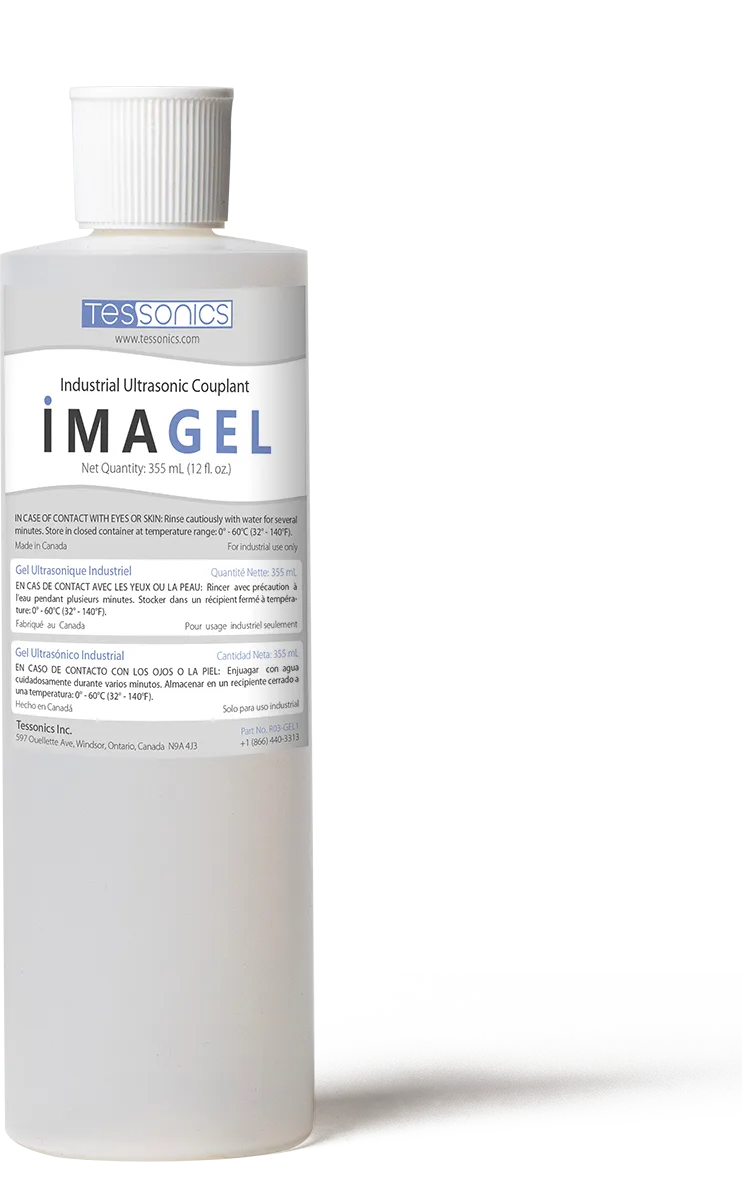IMAGEL
Industrial Ultrasonic Couplant
Our goal in developing and producing IMAGEL is to employ acoustic coupling with high impedance to improve imaging quality for NDE in the automotive and aerospace industry. Other currently used ultrasonic coupling gels are mostly water-based which only yield an acoustic impedance of 1.48 · 106 kg/(m2s). They are not very suitable for metals where the numbers are much higher (steel: 4.5 · 107 kg/(m2s), aluminum: 1.7 · 107 kg/(m2s).)
For a thin layer of coupling between the transducer and inspected body, its influence is not very important. However, for rough metal surfaces, such as deep indentations at spot welds, the gel's thickness may reach 1 mm. This makes the acoustic impedence of the coupling significant as mismatches between acoustic impedances create strong ultrasound reflections from both surfaces. Thus, acoustic coupling gels with higher impedances that more closely match the acoustic parameters of the metal help to improve the quality of acoustic imaging.
The glycerol-based IMAGEL has a density of 1.18 g/cm3 and an acoustic impedance of 2.39 · 107 kg/(m2s) which corresponds well to the material of the transducer tip (delay lines). That matching eliminates reflection on the delay line to gel boundary and reduces the reflection signal on the gel to metal boundary. The viscosity of the gel is maintained in the range of 30 - 40 kcPs to prevent gel sliding down from inspected areas on inclined surfaces. Also, the gel's composition includes a preservative to maintain its quality through its life-time (2 years) and a corrosion inhibitor to eliminate metal degradation.

